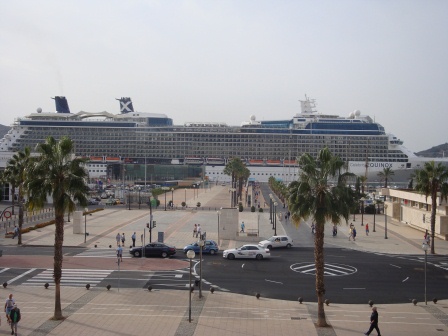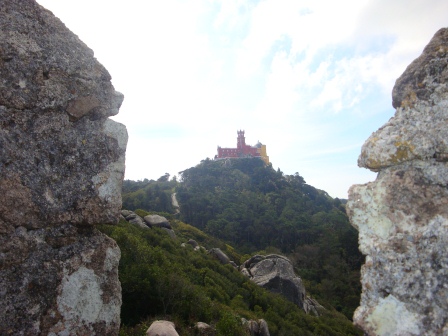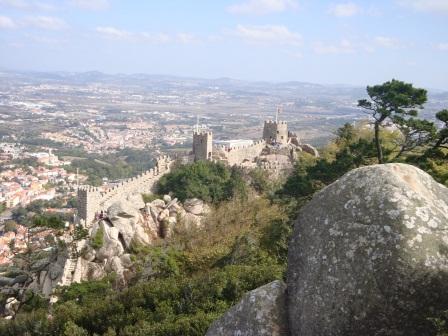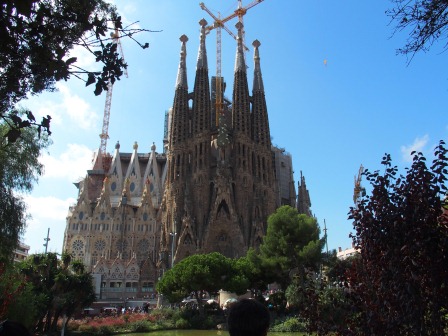This post is a synopsis of the rest of our trip. Previous post provided info about the most prominent stops. Not that the remaining stops don’t merit their own post, but I don’t want to drone on about this trip.
Gibraltar (UK)
I thought Gibraltar was a small peninsula with a big rock at it’s point. Wow, was I ever wrong because it’s primarily a rock with 30,000 people living around it’s base. We walked from the dock to the tram (which took us to the top), then we walked down, and back to the ship. Of all our days on this trip, this was our highest count of walking steps – 24,500+.
Caves, tunnels, views, and monkeys entertained us on the way down. Unfortunately, I didn’t get a picture of the airport with a main road crossing the runways, so see this 1-minute video. The return trip through the strait was at night … and with city lights on each side of the ship, one can tell Africa and Gibraltar are closer than one may think.
Montserrat
We visited Montserrat while in Barcelona. Located about 30 minutes outside the city, it’s a monastery located at the top of the Serrated Mountains. Within the altar is the Black Madonna. Unfortunately, we didn’t get to experience the stunning views because of the lingering fog – but we are glad we went. Because of the fog, here’s a link to a Google Images search to accompany mine.
Cadiz
Cadiz (KA diz) is the closest port to Seville (Sevilla), but getting there is a 2-hour trip in each direction. Given we were only in port 8-5, we first visited Jerez (the next section), then spent the afternoon in the Cadiz’s Old City. To me, Cadiz was the most unexpected surprise of the trip. The Old City was vibrant, and a grand cathedral serves as its hub. Thumbs up!
Jerez de la Frontera (Jerez)
From Cadiz, we took a ship’s tour to Jerez, a 20-minute ride from the port. Walking through it’s main square and past the Alcazar castle of the Moors, the focus of our tour was the Gonzalez Byass Bodegas that produces sherry (wine). We loved both the tour and the sherry samples.
Cartagena
Founded in 227 BC by the Carthaginians, today’s Cartagena is a small city for 200,000+ nestled in a small bay flanked by 5 mountains. The dock is close, so we strolled the streets to the Roman theater, the old bullring, the waterfront, and to the Castillo de la Concepcion for panoramic views of the city.
Palma de Mallorca
Palma de Mallorca, the largest city and capital of the Balearic Islands, was our first stop after leaving Barcelona. It was a Sunday, so many stores were closed and the local free walking tour we wanted wasn’t available. The weather was beautiful, so we made the best of what we could without a map.
Although more posts about this trip may appear over time, the links to past posts from the rest of the cruise are below.




















































































































































